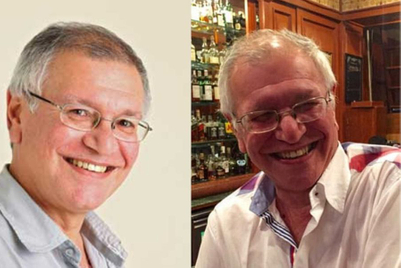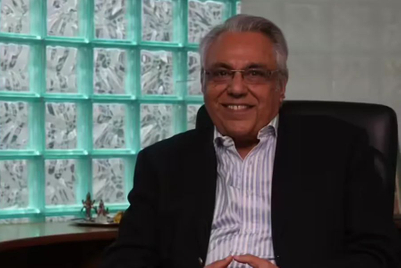When I joined advertising in 1985, it was the rainbow, glamorous industry. Few from management schools still joined it but it was seen as a fast track profession, where you started low but grew fast. I was in the bottom five percentile as a trainee but I think I hit the top ten percentile by 1988, in three years. Today, the industry lags behind in compensation and the moan is ‘no money, no people’.
It’s true the industry needs to do some course correction in starting salaries to make it an attractive option for today’s youngster…a man with bigger and faster material dreams than many of us who came in during the 70s and 80s. But perhaps there is more to the problem and challenge than just salaries and compensation.
If money was everything, then there must be queues only outside the highest paying industries and none outside the non-paying ones. Even more, all the good people must exist only in iBanks and foreign consultancies and riff raffs and dregs in the rest. That is not true. While industries pay according to their earning capabilities, people choose professions beyond just compensation. They consider their aptitude, their cultural fit, their mindsets and many things else. In that context, the question to ask is whether the advertising industry is actually making a conscious attempt to look for the right people at the right places. Are we depending too much on walk-ins and not making a conscious attempt to get the right people?
Consider the following changes that have happened in the market since the 80s. There are many more options for the creative minded beyond advertising- media, entertainment, fashion, interior design to name a few. Suddenly, advertising has lost its hallowed crown as ‘the creative field’ to be in. Many of the other creative fields offer individuals an opportunity to have their names on the name plate of companies and products- an entry into fame while much of advertising creativity remains ascribed to larger organizations. Similarly, there is a growth- even return- of entrepreneurship. Doing things on one’s own is not any longer daunting but very exciting to many youngsters willing to venture on their own. Service industries- especially those based on knowledge and human mind- have low entry barriers for people to enter and for enterprising people, that’s an option easily available.
The world around us has specialized. We see it across industries. Even advertising as an industry has got unbundled into many specialized streams- from mass media to public relations to corporate identity to customer relationship management to digital. These specialized services have been able to attract their own sets of clients while developing their own skills. Again, adding to the options for a youngster wanting to be entrepreneurial and yet not wanting to venture on his own immediately- small shops offer good grounding to learn before branching out on one’s own. In that context, business schools which were the hunting ground for many advertising agencies in the 70s and 80s (I was a product of such a prowl) may not be as relevant today. Their relevance is questionable not only in the context of salaries being out of reach but also in terms of skills imparted and the mindsets recruited. Many specialized communication schools and courses that have come into existence in the last couple of decades. Unfortunately, somewhere they don’t hold the same mind space, even in the advertising industry leaders’ minds, as business schools. They have not been able to carve a distinct position of value and quality.
The question arises as to whether the industry has worked with the academia to create enough quality schools to identify, nurture and grow the right talent. Have communication schools marketed themselves and geared themselves to best cater to the industry needs? One school, for sure, moved from communication to brand management in the course of its journey when it realized that the industry couldn’t cater to the ‘compensation’ demands or requirements of its graduates. The school didn’t think it important to sensitize the industry to the value it was delivering in terms of quality to re-craft pricing; the industry just moved on looking elsewhere for its recruits. Neither the industry attempted to understand the needs of future talent to re-gear its entry level salaries to remain attractive to that school nor did the school attempt to sell its talent to the industry and explain the reasons as to why premiums need to be paid for its graduates. There are many mass communication courses floating, certainly in the metros. The questions begs whether they have enough profile and stature to re assure agencies that they are recruiting the best talent and not just taking on management drop outs. Similarly, while there are specialized creative schools for film, fashion and design, I am not aware of any reputed one for advertising. This is a failure the industry needs to own if it wants to build a talent pool for the future.
Similarly, the question rises whether the industry has done much to promote itself. This is odd to even talk about given that we are an industry about ‘promotion’. There is a need for the industry to be profiled in the right places and forums- in business dailies and non-advertising forums. It’s important to have strong industry academia partnership to help profile the depth and value of what advertising does to give gravitas to the discipline and help attract the right mindsets into the profession. Right from identifying the talent it needs to actually helping in its development is the industry’s responsibility to work with the appropriate educational institutions. It, of course, means seniors from the industry spend time thinking about the issues and invest resources to actually train budding aspirants. In this context, there is an opportunity for the industry to use its current showcase events as a means to build equity among youth rather than be just remain an intra-industry event. (Would it be better to have Goafest in the metros and use it as a means to showcase our industry to interested youth? It’s worth pondering about). And yes, work with the academia to do some thought leadership pieces on subjects relevant to the industry to showcase its depth and power. Senior academics promoted the cause of business through their work- there is perhaps a need for similar spokespersons for our industry.
It’s easy to lament about the pay disparity and feel helpless. One, of course, doesn’t deny a need for correction. However, the truth remains that industries operate at different revenue levels and margins and don’t have the same ability to pay. There are enough lower paying industries including academics and medicine that get good talent. Advertising offers ‘fun’ and early ‘fame’ better than many organized industries. And there must certainly be enough people in a billion out there for whom advertising is exciting. It’s only about reaching out to them. The trick is to have a plan and make the effort to get the right mindsets to come into the industry. And not be dependent on walk-in traffic and serendipity to get good talent. That is where starting early- at the grass roots -will help.
If people are the key resource that makes things happen in the industry, it’s time we, as an industry, thought about it as much as product and profit.
Something worth thinking about.








.png&h=268&w=401&q=100&v=20250320&c=1)
.png&h=268&w=401&q=100&v=20250320&c=1)

